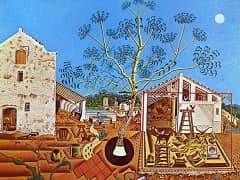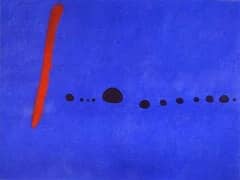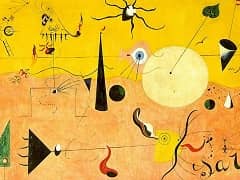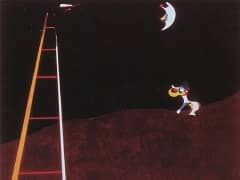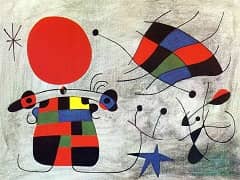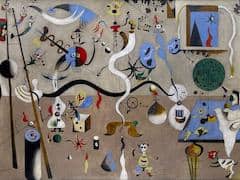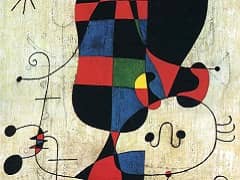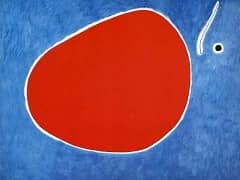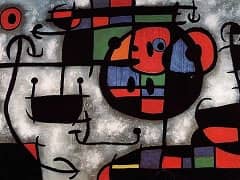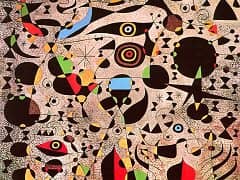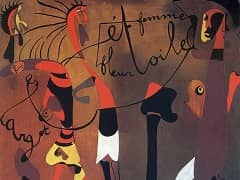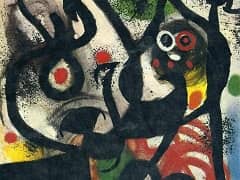Still Life with Old Shoe, 1937 by Joan Miro
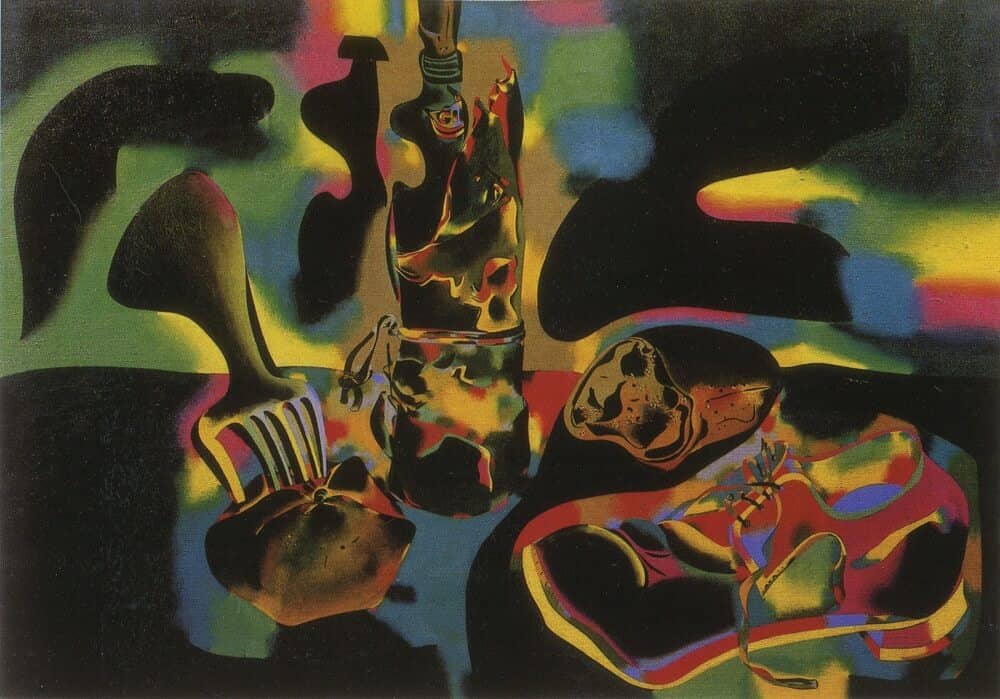
Still Life with Old Shoe is born in the context of Spanish Civil War. The anguish and fear of Miro are shown in the whole picture, the nightmare's type shapes of the objects and the flames, whose shadows are seen in the
colours and tones of the objects and it's supposed to be in the spectator's side. This work is often compared to Guernica of Pablo Picasso,
both because of its dispair and of the nowadays consequences of any war. The shapes in the horizon look like dark clouds, forecasting the tragedy to come.
On the left there is an apple impaled by a fork, then a bottle, a loaf of bread and the shoe of the title. The main colours are black, red and acidic yellow, which symbolize an apocalytic landscape, all in flames (the fire being
actually outside the painting). This infernal sight is underlined by the shades in the horizon. The silhouettes of all objects can be clearly defined and the round-shaped lines of the whole composition creat dynamism.
The objects chosen by Miro are deliberatedly poor and humble, tied to ordinary people's life: an old shoe, a little of food, some things found in any kitchen. They stand as a tragic symbol. Its huge size become a threat, reinforced
by the contrast of colours and the ghostly ligh, which sometimes seem to emanate from the objects. Metamorphosis of the objects is one of the keys of this work and it is produced not only by the size but also by the use of blaze colours.
The preparatory drawings, found in a piece of newspaper, tell that this work was intended to be a large pastel, related to the series of 1934. They are inspired by Vincent van Gogh's
A Pair of Shoes.
He incorporated the old shoe in the picture as a gesture toward Van Gogh; he had the sense that his eye was bringing all the world's psychosis to everything on which it fell; the objects in the
painting seem lit by a savage incandescence, the light comes from the direction of the artist.

